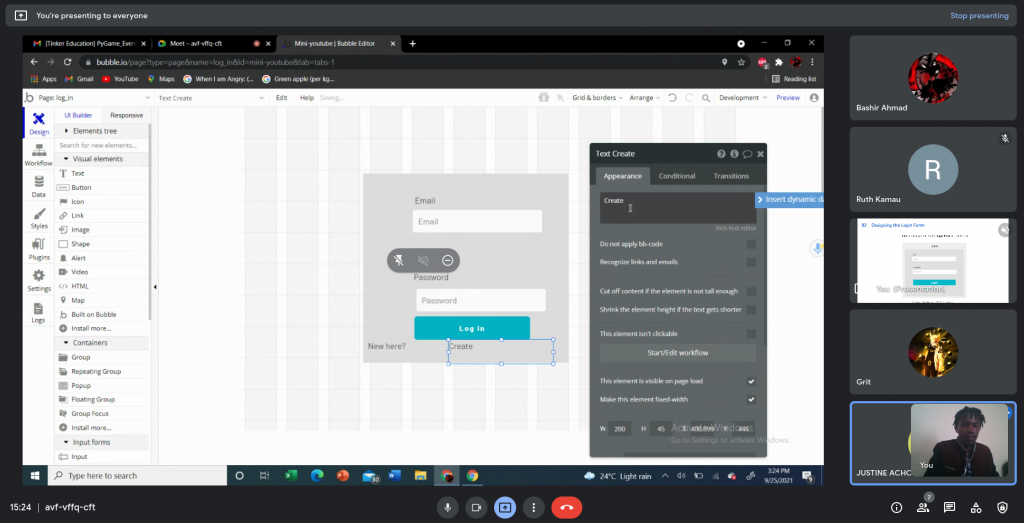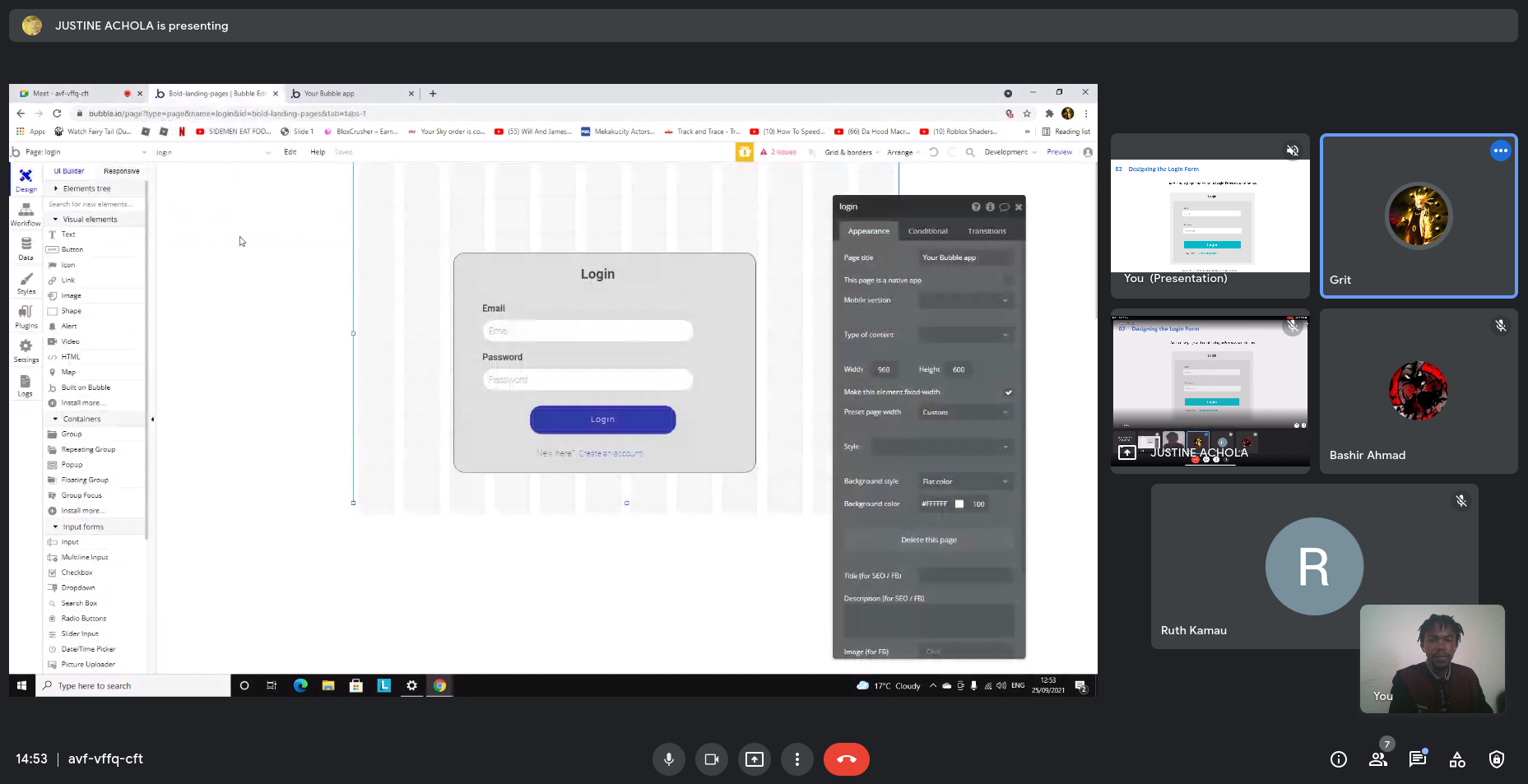Databases allow software applications to store users’ information. For instance, when a user signs up an account on YouTube, the user’s information such as email, username and password is stored in a database. These data can be retrieved later, to help identify the user. To work with a database, web forms such as sign-up forms and login forms are used to capture user information. Justine, Kai and Bashir love tinkering! They are intelligent students in our YouTube clone program. In this program, they got to put knowledge into practice by building a clone of YouTube. They have a solid background in Python Programming from previous classes. Recently, they also learned how to create simple web pages using HTML, CSS and JS. In this lesson, these brilliant students got to learn how to create custom web forms from the beginning. By the end of the lesson, they got to preview their software applications and test if a user can access their accounts. Isn’t it amazing!

How Is This Accomplished?
First and foremost, a quick search of youtube.com or spotify.com will lead you to these applications’ landing pages. Users can decide to create an account on YouTube or Spotify in order to like videos and follow artists. Some of these web applications limit users from certain incentives if they do not have an account.In this lesson, the students learnt how to think like the creators/inventors of YouTube or Spotify. They used bubble to create web forms that capture new and regular users’ information before they can access their accounts. They got to learn the difference between a sign-up and a log in form. They also get to design both types of forms and add input fields such as the username, email and password. The students were successful in creating two elaborate web forms that could capture a user’s data in the application. As intriguing as it already sounds, it doesn’t end here. They look forward to their next class where they will get to think critically and learn what happens when the SIGN-UP and the LOG IN buttons are clicked. At the end of this lesson, the students marvel at how simple it is to create a database using Bubble. All they need to know is the data needed from a user, then add data fields to the database and their applications are ready to store user information. At the end of the lesson, the students learnt that every time a new account is created, the data is safely stored in the database.



Leave A Comment